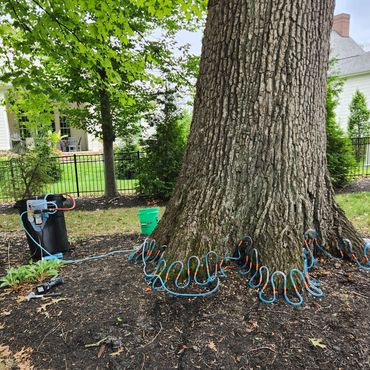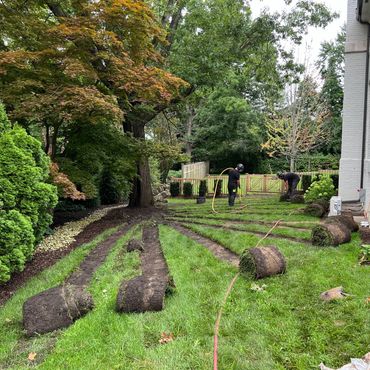Signed in as:
filler@godaddy.com
Signed in as:
filler@godaddy.com

The preservation of trees is at the core of our ethos. It's not just a service we provide; it's the foundation upon which our company was built. Our mission is to become the first name that comes to mind whenever someone has concerns about their tree's health.
Our arborists are dedicated to extending the life of your trees, ensuring they stand as enduring features of your landscape for decades to come. Through soil amendments, structural support systems, and tailored treatments, we work tirelessly to preserve your trees' health and longevity.
If your trees appear yellow or stunted, they could be lacking in soil nutrients. Urban trees, deprived of the natural forest leaf litter, might require additional nourishment. Here's how our product can help:
In central Ohio, soil compaction due to our soil type, traffic, and construction can choke tree roots by limiting air space. This also makes it difficult for water and nutrients to seep into the soil. A great way to improve soil structure is a mixture of biochar and other organic materials introduced into the soil.
Tree pests in Central Ohio are a common issue affecting nearly every property. Here's how we manage them effectively:
Managing Tree Diseases in Central Ohio
Addressing Weak Structured Trees in Central Ohio
Certification and Expertise: It's crucial to engage an ISA Certified Arborist who specializes in Tree Support Systems or Risk Mitigation Pruning for dealing with trees with structural weaknesses. A bonus would be to meet with an Arborist who has achieved the ISA Tree Risk Assessment Qualification.
Tree Risk Assessments: We provide detailed Tree Risk Assessments, which go beyond our standard consultations. These assessments systematically evaluate tree risks, considering potential targets. This is a service that is billed at $150 per hour.
Environmental stress on Trees in Central Ohio
Environmental stress in Ohio can arise from various sources, affecting trees differently based on species, location, and modifications to the landscape.








